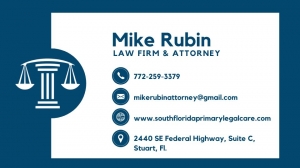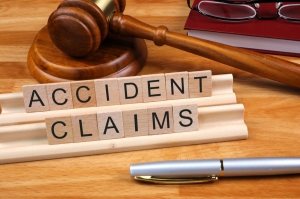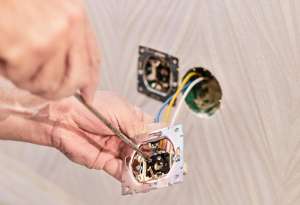Effervescent tablets are rapidly gaining popularity in the nutraceutical, pharmaceutical, and functional food industries. Their unique fizzing effect, quick dissolution, and pleasant taste make them a preferred alternative to traditional tablets and capsules. From multivitamins to electrolyte drinks, effervescent tablets offer consumers a convenient and enjoyable way to consume active ingredients.
For brands, however, formulating effervescent tablets requires careful selection of ingredients, precise balancing, and technical expertise. In this article, we'll explore the core components, formulation techniques, and key considerations for creating stable, effective, and market-ready effervescent tablets.
1. What Are Effervescent Tablets?
Effervescent tablets are solid dosage forms that dissolve in water, releasing carbon dioxide and forming a fizzy solution. This effervescence is created through a reaction between acids and carbonates when the tablet comes into contact with water.
Unlike traditional tablets that are swallowed whole, effervescent tablets are designed to provide:
-
Fast absorption of nutrients or actives.
-
Better taste masking, ideal for ingredients with unpleasant flavors.
-
High consumer compliance, especially among children and elderly populations.
-
Customizable flavors, making health and wellness more appealing.
2. Core Ingredients of Effervescent Tablet Formulation
Developing a successful effervescent tablet starts with choosing the right ingredients in the right ratios.
a. Acid-Base System
The fizzing effect comes from the reaction between an acid and a base:
-
Acid Source: Commonly citric acid or tartaric acid.
-
Base Source: Usually sodium bicarbonate or potassium bicarbonate.
The acid-to-base ratio must be stoichiometrically balanced to ensure complete reaction and optimal effervescence without leaving residues.
b. Active Ingredients
These are the functional or nutritional components, such as:
-
Vitamins (e.g., Vitamin C, B-complex)
-
Electrolytes (e.g., sodium, potassium, magnesium)
-
Herbal extracts
-
Caffeine, collagen, probiotics, or other functional actives
The amount and type of active ingredient influence tablet size, dissolution time, and taste.
c. Fillers and Binders
Effervescent tablets need fillers like sorbitol or mannitol to give bulk and improve mouthfeel after dissolution. Binders help maintain tablet integrity during handling and packaging.
d. Flavors, Sweeteners, and Colors
Since effervescent tablets are dissolved in water, taste plays a big role. Flavors (lemon, orange, mixed fruit), natural or artificial sweeteners (like sucralose, stevia), and food-grade colors improve palatability and visual appeal.
e. Lubricants and Anticaking Agents
Lubricants like PEG or sodium benzoate facilitate tablet manufacturing, while anticaking agents ensure free-flowing powders and prevent moisture-related clumping.
3. Formulation Process of Effervescent Tablets
Creating effervescent tablets involves a controlled and moisture-free environment, as premature exposure to humidity can trigger the effervescence too early.
Step 1: Ingredient Blending
All dry ingredients (acids, bases, actives, excipients) are blended uniformly to ensure homogeneity.
Step 2: Granulation (Optional)
Depending on the formulation, dry granulation may be performed to improve flow properties and reduce segregation during compression.
Step 3: Compression
The blend is compressed into tablets using rotary tablet presses with low compression force. High force may damage the acid-base structure, affecting dissolution.
Step 4: Packaging
Packaging is critical. Effervescent tablets are highly sensitive to moisture, so they are usually packed in aluminum tubes with desiccants or moisture-barrier blisters.
4. Key Formulation Considerations
-
Moisture Control: Even a small amount of moisture can trigger the effervescent reaction. Ingredients and processing must remain completely dry.
-
Dissolution Time: Tablets should fully dissolve within 2–5 minutes in water, without leaving sediment.
-
Taste Masking: Bitterness from actives must be balanced with flavors and sweeteners.
-
Tablet Size & Weight: Larger actives require bigger tablets, which can impact packaging and user experience.
-
Stability Testing: Tablets must maintain effervescence, taste, and potency throughout their shelf life.
5. Applications of Effervescent Tablets
Effervescent tablets are used in various segments:
-
Nutraceuticals: Vitamin C tablets, multivitamin blends, collagen, and energy boosters.
-
Pharmaceuticals: Pain relievers, antacids, rehydration solutions.
-
Sports & Wellness: Electrolyte and hydration tablets for athletes.
-
Functional Beverages: Instant drink tablets with herbal or botanical extracts.
This versatility makes effervescent tablets a powerful format for innovative product development.
Conclusion
Effervescent tablet formulation is both a science and an art. By understanding the acid-base chemistry, choosing the right excipients, maintaining moisture control, and optimizing taste, brands can create high-quality, consumer-friendly products that stand out in the market.
Partnering with experienced formulation consultants can simplify this process—from concept to commercial production—ensuring your effervescent product is stable, effective, and loved by consumers.





